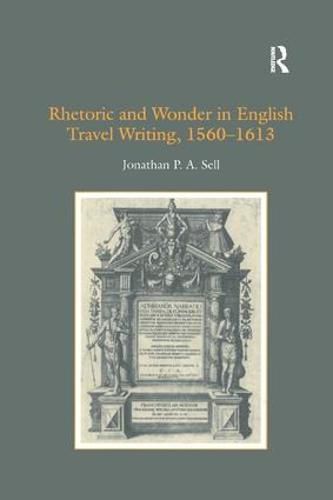Readings Newsletter
Become a Readings Member to make your shopping experience even easier.
Sign in or sign up for free!
You’re not far away from qualifying for FREE standard shipping within Australia
You’ve qualified for FREE standard shipping within Australia
The cart is loading…






Rhetoric and Wonder in English Travel Writing, 1560-1613, shows how rhetorical invention, elocution and ethos combined to create plausible representations by generating intellectual and emotional significances which, meaningful in consensual terms, were ‘consensually’ true. However, some traveller-writers betrayed an unease with such representation, rooted as it was in a metaphorical epistemology out of kilter with an increasingly empiricist age.
This book throws new light onto the episteme shift that ushered in modernity with its distrust of metaphor in particular and rhetoric’s ‘wordish descriptions’ in general. In response to the empirical desiderata of scientific rationalism, traveller-writers textually or physically made their own bodies available as evidence of their encounters with wonder, thus transforming themselves into wonderful objects. The irony is that, far from dispensing with rhetoric, they merely put the accent on its more dramatic arts of gesture and action. The body’s evidence could still be doctored, but its illusory truths were better able to satisfy the empirical demand for ‘ocular proof’.
The author’s main purposes here are to complement, and sometimes counter, recent work on early modern travel literature by concentrating on its use of rhetoric to communicate meaning; and to suggest how familiarity with the workings of rhetoric and its communicative and epistemological premises may enhance readings of early modern English literature generally.
$9.00 standard shipping within Australia
FREE standard shipping within Australia for orders over $100.00
Express & International shipping calculated at checkout
Rhetoric and Wonder in English Travel Writing, 1560-1613, shows how rhetorical invention, elocution and ethos combined to create plausible representations by generating intellectual and emotional significances which, meaningful in consensual terms, were ‘consensually’ true. However, some traveller-writers betrayed an unease with such representation, rooted as it was in a metaphorical epistemology out of kilter with an increasingly empiricist age.
This book throws new light onto the episteme shift that ushered in modernity with its distrust of metaphor in particular and rhetoric’s ‘wordish descriptions’ in general. In response to the empirical desiderata of scientific rationalism, traveller-writers textually or physically made their own bodies available as evidence of their encounters with wonder, thus transforming themselves into wonderful objects. The irony is that, far from dispensing with rhetoric, they merely put the accent on its more dramatic arts of gesture and action. The body’s evidence could still be doctored, but its illusory truths were better able to satisfy the empirical demand for ‘ocular proof’.
The author’s main purposes here are to complement, and sometimes counter, recent work on early modern travel literature by concentrating on its use of rhetoric to communicate meaning; and to suggest how familiarity with the workings of rhetoric and its communicative and epistemological premises may enhance readings of early modern English literature generally.